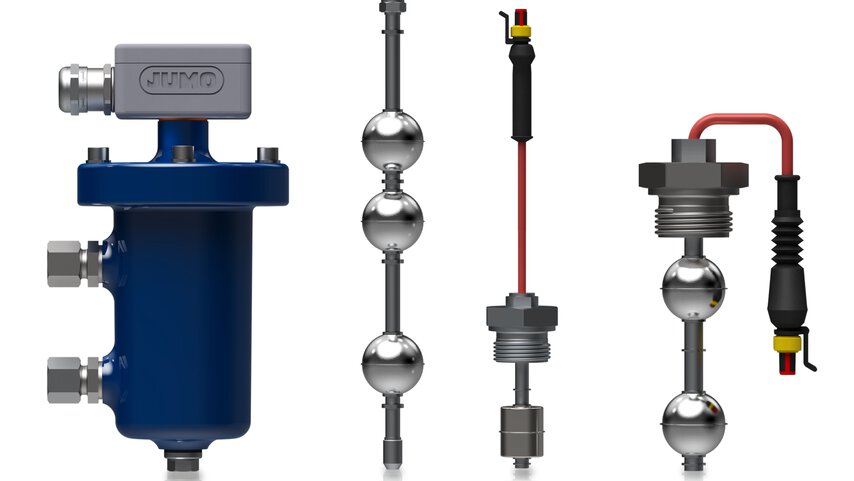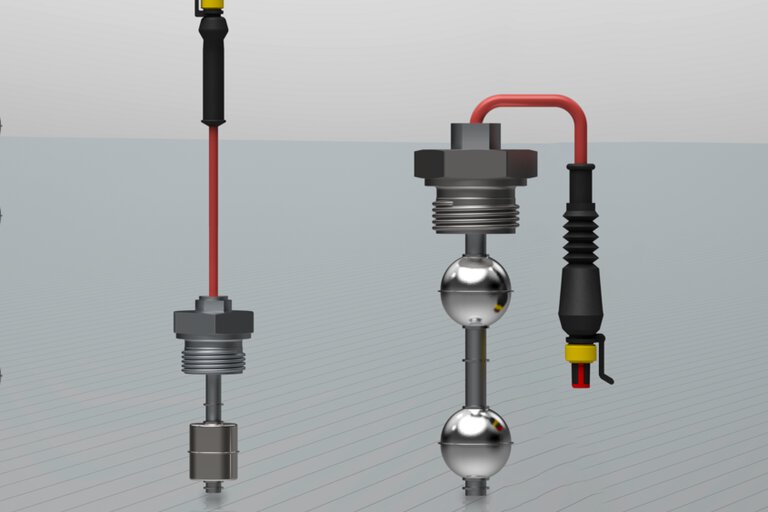

How float switch works?
Devices operating on the on-off principle have been used for centuries, among others to control water flow in agriculture. To this day, float switches are the most commonly used devices to monitor liquid levels. How do they work and what do they owe their popularity to?
Float switch
A float switch, otherwise known as a pump switch, float switch or float level controller, is the part of a pump that is used to measure the water level in a tank. They make it possible to fill it in an efficient and economical way.
Construction of float switch
The simplest mechanical float switch consists of:
- a float with a hollow space inside
- a guide tube
- adjustment flanges which limit its movement on the tube
- a reed switch (sensor with a built-in magnet) located inside the tube
In modern electric float switches, the switching element is an electric circuit, and their construction is more complicated.
How does the float switch work in a water pump?
Float switch - principle of operation
The air-filled float has a low density and high buoyancy. As a result, it rises and falls as the liquid level rises and falls. In mechanical float switches, it is used to move a mechanical lever and turn off the pump.
Alarming
Float switches are used not only for measuring but also for alarming when a certain level is reached or exceeded. When this happens, the float switches a reed contact that triggers audible alarms, valves or pumps. This is a cost-effective solution that increases plant safety and protects the pump from dry running and hydraulic damage.
Advantages of the float switch
- Does not consume electricity continuously
- Increases safety of the installation
- High precision measurement in tanks, deep wells and pumping stations
- High reliability

float switch in application
Float switch specifications
Before selecting a suitable float switch, it is necessary to specify such elements as:
- number of switching outputs (contacts)position and function of each switching output
- construction material e.g. stainless steel, plastic
- length of the guide tube
- electrical connection
- process connection
Reed switch - what is it?
Reed switches are glass contacts placed in a hermetic bulb, which short circuit and open when exposed to a magnetic field. In float switches they are placed inside the tube.
How does reed switch work?
Open reed switches short circuit when a magnetic field is applied. Current then flows across this short circuit and a switching signal is detected. Normally closed reed switches open, normally open reed switches react in the opposite way.
Another type is switched reed switches, which have three contacts. This results in both a closed and an open reed in each operating state.
To maintain the signal when the fill level is reached, control collars are mounted. These are used to limit the movement of the float.
How to connect the float to the pump?
There are usually three electrical wires coming out of an automatic float, color-coded blue, brown and black. The brown comes from the normally closed switch contact, the blue comes from the normally open contact, and the black is common. Depending on whether the float switch is to empty or fill the tank, the appropriate pair of wires must be selected.
Emptying the tank
For tank emptying the brown cable is connected to max. 250V. The black wire is connected to the neutral wire and the blue wire is insulated.
Filling the tank
To fill the tank, the blue wire is connected to max. 250V, the black wire is connected to the neutral wire and the brown wire is insulated.
Note: Color coding may vary, please refer to the manual.
JUMO float switch
JUMO offers customized float switches, such as the JUMO NESOS R01 LS, with a high level of vertical integration. We will tailor a solution for your application, even if it is customized. Check out our products and contact us!
- ${title}${badge}

